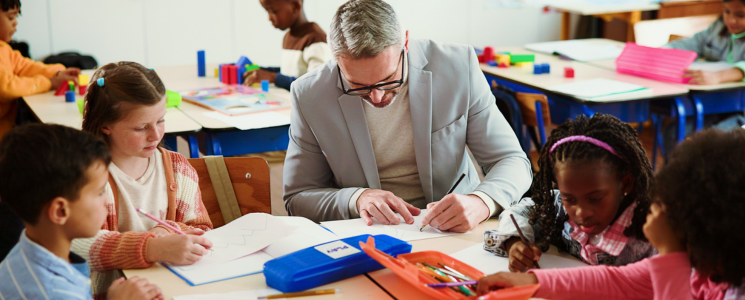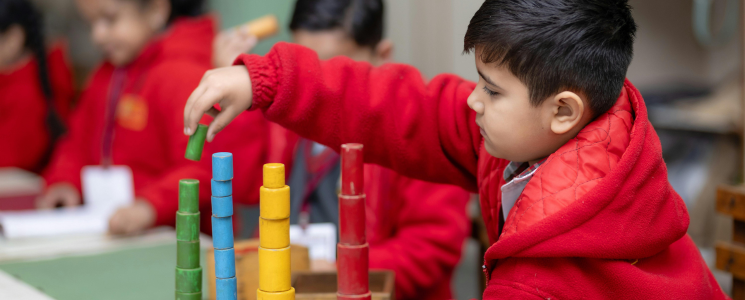Teaching in primary schools is one of the most rewarding professions in the world. Every day, teachers shape young minds, spark curiosity, and lay the foundation for lifelong learning. However, behind every successful classroom experience lies thoughtful lesson planning. For those involved in primary teaching Australia, effective lesson planning is not just a routine task, it’s an art that balances structure with creativity.
This guide explores how to plan lessons effectively within the Australian education framework. You’ll learn practical strategies, planning steps, and professional insights that can help you create engaging lessons that align with curriculum goals while inspiring your students.
Understanding Lesson Planning in the Context of Primary Teaching Australia
Lesson planning is the backbone of quality teaching. In primary teaching Australia, lesson plans serve as blueprints for what students will learn, how they will learn it, and how success will be measured.
Teachers across Australia follow the Australian Curriculum, which provides a consistent national framework for learning from Foundation to Year 10. This curriculum outlines content descriptions, achievement standards, and general capabilities. But within that structure, teachers have the freedom to design lessons that reflect their students’ interests, community context, and learning styles.
A good lesson plan ensures that:
- Learning outcomes are clear and measurable.
- Activities are engaging and age-appropriate.
- Assessment methods align with objectives.
- Every student feels included and supported.
Lesson planning in primary teaching Australia is about creating experiences that help children understand, apply, and enjoy what they learn.
Step 1: Start with the Curriculum and Learning Outcomes
Every great lesson begins with a clear destination. Before creating activities or gathering materials, you must identify what students need to learn according to the Australian Curriculum.
Aligning with Curriculum Standards
Review the relevant content descriptions for the year level and subject area. These outline what knowledge and skills students are expected to develop. For example, a Year 3 English lesson may focus on identifying main ideas in a text, while a Year 5 Science lesson could explore light and shadows.
Setting Learning Intentions
Once you know the goal, write clear learning intentions. These describe what students will understand or be able to do by the end of the lesson. For instance:
- “Students will identify and describe the main characters and settings in a story.”
- “Students will measure the area of shapes using standard units.”
These outcomes keep your lesson focused and purposeful. In primary teaching Australia, clarity of learning goals helps both teachers and students track progress effectively.
Step 2: Design Engaging Lesson Activities
After establishing objectives, the next step is designing activities that bring those goals to life. The best lessons combine structure with fun, allowing students to explore ideas through hands-on learning.
Use Varied Teaching Methods
A key part of effective primary teaching Australia is balancing different teaching approaches:
- Explicit instruction for introducing new concepts.
- Collaborative learning to build communication and teamwork.
- Inquiry-based learning to encourage curiosity and critical thinking.
- Creative expression through art, drama, or technology.
For example, a Science lesson on habitats might start with a short video (explicit instruction), followed by a group research task (collaborative learning), and end with students creating posters to present their findings (creative expression).
Make It Interactive
Engagement increases retention. Use games, discussions, and movement-based activities to make lessons interactive. Even small activities like “Think-Pair-Share” or classroom quizzes can keep energy levels high and deepen understanding.
When students actively participate, they become partners in the learning process, a central philosophy in primary teaching Australia.
Step 3: Plan for Differentiation
No two students learn in the same way. In every classroom, you’ll find different levels of ability, interests, and backgrounds. That’s why differentiation is a cornerstone of effective lesson planning in primary teaching Australia.
Catering to Diverse Needs
Consider ways to adjust your lesson for students who need extra support or additional challenges.
- Provide visual aids, sentence starters, or hands-on materials for students who learn best through visuals or touch.
- Offer extension tasks or independent research for advanced learners.
- Use flexible grouping so students can work with peers who complement their learning styles.
Incorporating Inclusive Practices
Inclusivity is vital in Australian classrooms. Incorporate strategies that support students with disabilities, English as an Additional Language (EAL) learners, and those from diverse cultural backgrounds.
By embedding inclusion into your plans, you ensure that every student feels valued and capable of success. Differentiation transforms lesson planning from a one-size fits all model into a truly equitable learning experience.
Step 4: Integrate Assessment Meaningfully
Assessment is not just about testing knowledge at the end of a lesson. It’s about understanding how well students are learning and adjusting teaching accordingly. In primary teaching Australia, effective assessment is ongoing, purposeful, and supportive.
Types of Assessment
Use a mix of assessment methods to capture different aspects of learning:
- Formative assessment: quick checks for understanding during the lesson (e.g., exit tickets, quizzes, questioning).
- Summative assessment: formal tasks at the end of a unit (e.g., projects, written tests, presentations).
- Peer and self-assessment: encourage students to reflect on their own progress and provide constructive feedback to others.
Aligning Assessment with Learning Goals
Always ensure that your assessments measure the specific skills and knowledge from your learning outcomes. For example, if the goal is to “identify persuasive techniques in texts,” the assessment should directly test that skill, not unrelated content.
Meaningful assessment helps teachers identify strengths and gaps, allowing them to plan targeted follow-up lessons, a best practice across primary teaching Australia.
Step 5: Incorporate Real-Life and Cross-Curricular Connections
One of the best ways to make learning memorable is to connect it to real-world experiences. The Australian Curriculum encourages teachers to integrate general capabilities and cross-curriculum priorities, making learning both relevant and holistic.
Bringing Learning to Life
For example, a Mathematics lesson on budgeting can be tied to a class project where students plan a small fundraising event. An English writing unit might link to a Science topic, such as writing persuasive letters about environmental protection.
These interdisciplinary lessons help students see the bigger picture, how knowledge connects across subjects and impacts daily life.
Embedding Values and Citizenship
Primary teaching Australia also emphasizes developing responsible, active citizens. Incorporate opportunities to discuss values such as fairness, teamwork, and respect. Activities that promote sustainability, cultural understanding, or community service align well with national priorities.
When lessons feel relevant to students’ lives, motivation increases, and learning becomes more meaningful.
Step 6: Reflect and Refine After Every Lesson
The best teachers are lifelong learners. Reflection is a crucial part of continuous improvement in primary teaching Australia. After each lesson, take time to evaluate what worked well and what could be improved.
Ask yourself:
- Did students achieve the intended learning outcomes?
- Were activities engaging and inclusive?
- Did the timing and resources support learning effectively?
- How can I adapt this lesson for future use?
You can also invite student feedback through quick surveys or informal discussions. Their insights often reveal valuable perspectives on what helps them learn best.
Documenting these reflections helps build a strong portfolio of lesson plans that evolve with your teaching practice. Over time, your planning becomes more efficient and impactful.
Practical Tips for Effective Lesson Planning
To make your planning process smoother and more efficient, here are a few practical strategies commonly used in primary teaching Australia :
1. Use a Consistent Planning Template
Having a structured template helps ensure all key elements are covered, objectives, materials, activities, assessments, and differentiation. Many schools provide templates, but you can personalize them to suit your style.
2. Collaborate with Colleagues
Team planning saves time and sparks new ideas. Sharing resources and reflecting together builds stronger professional practice.
3. Incorporate Technology
Digital tools can simplify lesson planning and enhance classroom engagement. Platforms like Google Classroom, Seesaw, and Canva are popular in primary teaching Australia for creating interactive content and tracking student progress.
4. Prepare Backup Plans
Sometimes lessons don’t go as expected due to time constraints or technical issues. Having a quick backup activity ensures smooth transitions without losing momentum.
5. Focus on Quality, Not Quantity
It’s better to plan fewer, well-structured lessons than to overload your week with rushed ones. Effective planning means striking the right balance between depth and flexibility.
Building Confidence as a Primary Teacher
Lesson planning can seem overwhelming at first, especially for new teachers. But with practice, it becomes a natural part of your routine. The goal is not perfection, it’s progress.
Remember, great lesson plans are living documents. They evolve as your students grow and as you gain more experience. Reflecting on successes and challenges builds confidence and strengthens your teaching craft. In primary teaching Australia, every lesson you design contributes to shaping curious, capable, and confident learners. That’s a powerful and meaningful role to play.
Effective lesson planning is the key to classroom success. For anyone involved in primary teaching Australia, it’s more than a professional skill, it’s the foundation for inspiring the next generation of learners. By starting with clear learning goals, creating engaging activities, differentiating instruction, assessing meaningfully, and reflecting regularly, you set your students up for lasting success. You also make your teaching more organized, rewarding, and impactful.
When teachers plan with purpose, students learn with passion. That’s the true essence of effective lesson planning, a blend of structure, creativity, and care that transforms education into a lifelong adventure.







